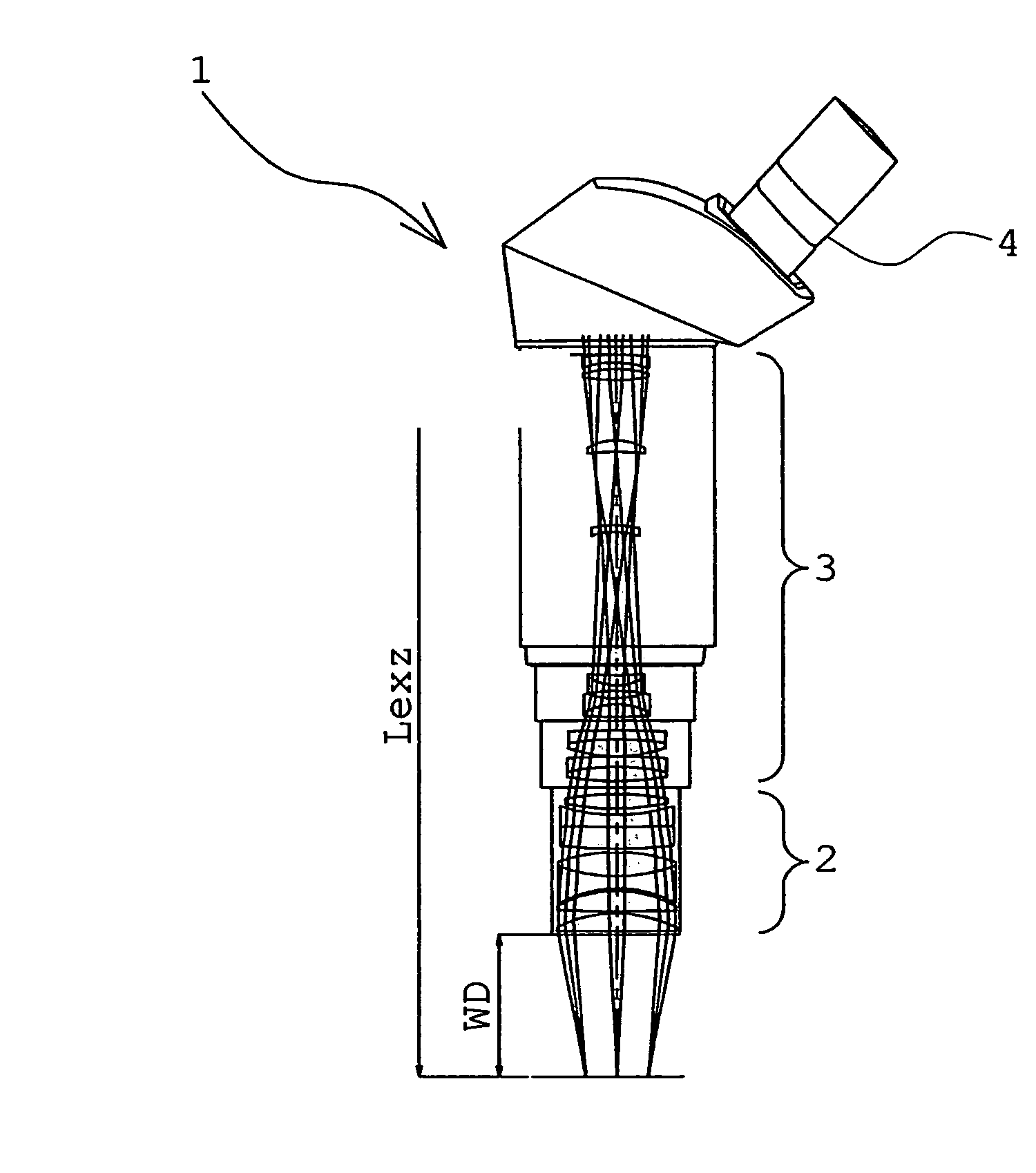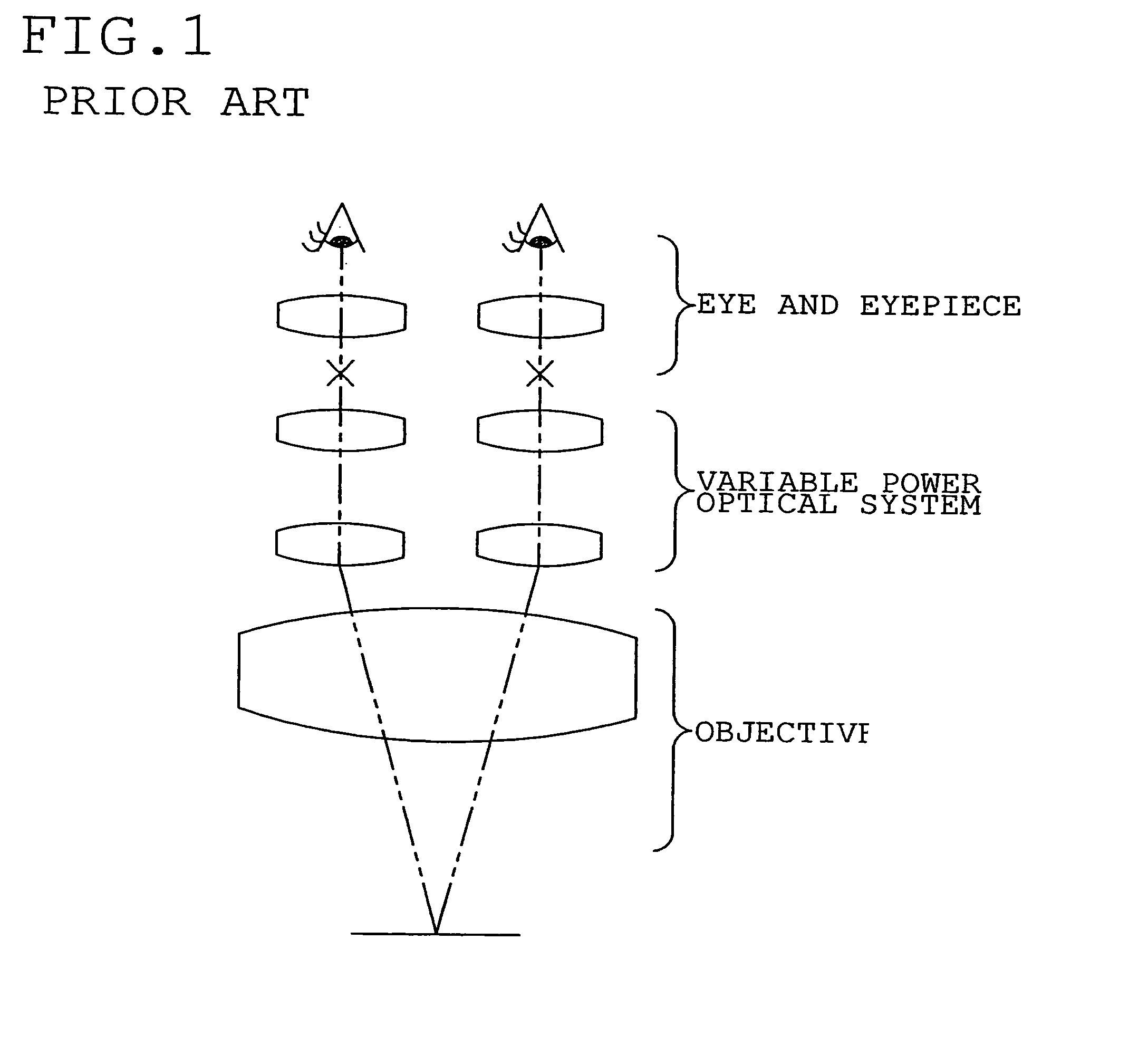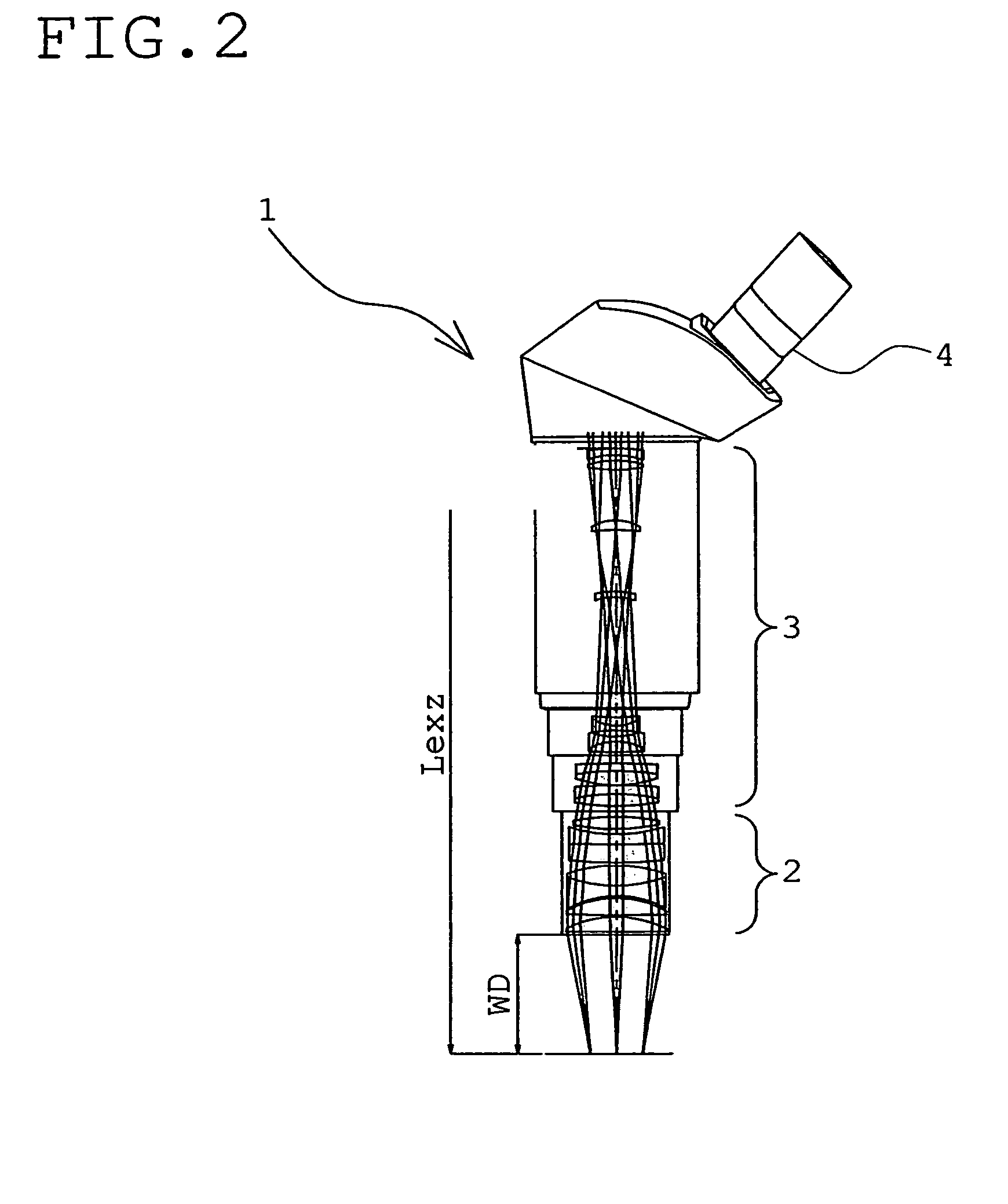Microscope system
a microscope and optical system technology, applied in the field of microscope systems, can solve the problems of insufficient brightness of the image on the higher magnification side, limited diameter at the entrance of the afocal variable magnification optical system, and inability to obtain sufficient brightness, etc., to achieve the effect of a large observation field of view, improved operation performance and large resolution
- Summary
- Abstract
- Description
- Claims
- Application Information
AI Technical Summary
Benefits of technology
Problems solved by technology
Method used
Image
Examples
first embodiment
[0067]FIG. 2 is a diagram explaining an optical composition of the microscope system of the first embodiment according to the present invention.
[0068]As shown in FIG. 2, a microscope system 1 of the first embodiment is equipped with an objective lens 2 and an afocal variable magnification optical system 3, and a sample can be observed through an eyepiece 4.
[0069]As shown in FIG. 2, the microscope system of the first embodiment is constituted such that it has a long working distance WD, and a distance to the exit end of a zoom lens is suppressed moderately. In FIG. 2, Lexz is a distance from an object surface to the most distant end of the afocal variable magnification optical system. In FIG. 2, a light path diagram shows a state when the magnification of the afocal variable magnification optical system is the minimum.
[0070]In the first embodiment, the value of the condition (2) is 45, and the value of the condition (3) is 7.5. However, when values of the conditions (2) and (3) are s...
second embodiment
[0073]FIGS. 3A-3C are sectional views taken along the optical axis, showing an example of an afocal zoom lens used for the microscope system of the present invention.
[0074]FIG. 3A shows a minimum magnification state of the afocal zoom lens.
[0075]FIG. 3B shows a middle magnification state.
[0076]FIG. 3C shows a maximum magnification state.
[0077]As shown in FIGS. 3A-3C, the a focal zoom lens 5 has a plurality of lens groups G1, G2, G3, G4, G5, and G6, wherein magnification can be changed by changing a distance from an object surface to each of these lens groups G1 to G6.
[0078]FIGS. 3A-3C show that the diameter of an exit pupil becomes the maximum when the magnification is the minimum, and the diameter of then exit pupil becomes the minimum when the magnification is the maximum.
[0079]The second embodiment shows a case where ENP (max)=45 and the full length is 190. When ENP(max) is reduced until it becomes 30, the full length becomes 127. The afocal zoom lens 5 can be combined with, for ...
third embodiment
[0086]In FIGS. 6A to 6D, examples of an objective lens combined with the microscope system according to the present invention are shown. A light path diagram shown in each of FIGS. 6A-6D shows a state where the magnification of an afocal variable magnification optical system is the minimum, and an observation range becomes the maximum. An objective lens 7a shown in FIG. 6A has a lens group G9 having negative power, a focal length of which is longer than the full length of a lens, and a lens group G10 having positive power. Objective lenses 7b to 7d have focal lengths which are shorter than the full lengths of the respective objective lenses, and include, respectively, lens groups G11, G14 and G17 each having positive power, lens groups G12, G15 and G18 each having weak power, and lens groups G13 G16, and G19 each composed of a meniscus lens with a convex surface being directed to the object side and a positive single lens.
[0087]As shown in FIGS. 6A to 6D, in any of objective lenses,...
PUM
 Login to View More
Login to View More Abstract
Description
Claims
Application Information
 Login to View More
Login to View More - R&D
- Intellectual Property
- Life Sciences
- Materials
- Tech Scout
- Unparalleled Data Quality
- Higher Quality Content
- 60% Fewer Hallucinations
Browse by: Latest US Patents, China's latest patents, Technical Efficacy Thesaurus, Application Domain, Technology Topic, Popular Technical Reports.
© 2025 PatSnap. All rights reserved.Legal|Privacy policy|Modern Slavery Act Transparency Statement|Sitemap|About US| Contact US: help@patsnap.com



